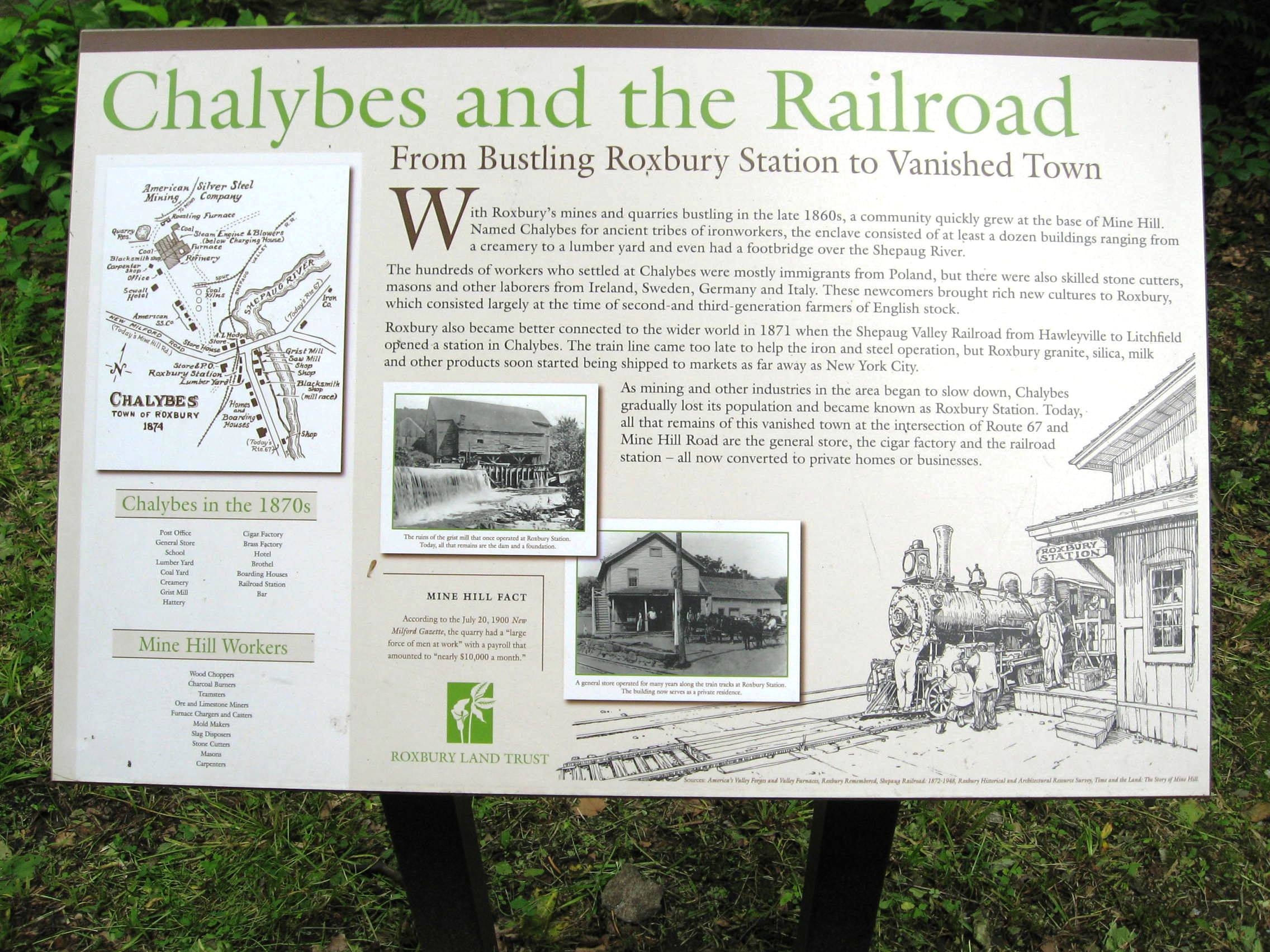Photograph as originally submitted to
this page in the Historical Marker Database
www.HMdb.org.
Click on photo to resize in browser. Scroll down to see metadata.
Photographer: Michael Herrick
Taken: June 22, 2009
Caption:
Chalybes and the Railroad | Additional Description: From Bustling Roxbury Station to Vanished Town
With Roxbury’s mines and quarries bustling in the late 1860s, a community quickly grew at the base of Mine Hill. Named Chalybes for ancient tribes of ironworkers, the enclave consisted of at least a dozen buildings ranging from a creamery to a lumber yard and even had a footbridge over the Shepaug River.
The hundreds of workers who settled at Chalybes were mostly immigrants from Poland, but there were also skilled stone cutters, masons and other laborers from Ireland, Sweden, Germany and Italy. These newcomers brought rich new cultures to Roxbury, which consisted largely at the time of second and third-generation farmers of English Stock.
Roxbury also became connected to the wider world in 1871 when the Shepaug Valley Railroad from Hawleyville to Litchfield opened a station in Chalybes. The train came too late to help the iron and steel operation, but Roxbury granite, silica, milk and other products soon started being shipped to markets as far away as New York City.
As mining and other industries in the area began to slow down, Chalybes gradually lost its population and became known as Roxbury Station. Today, all that remains of this vanished town at the intersection of Route 67 and Mine Hill Road are the general store, the cigar factory and the railroad station – all now converted to private homes or businesses.
Submitted: July 5, 2009, by Michael Herrick of Southbury, Connecticut.
Database Locator Identification Number: p69554
File Size: 0.551 Megabytes
To see the metadata that may be embedded in this photo, sign in and then return to this page.
